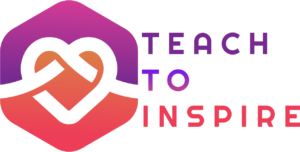In a rapidly evolving professional landscape, diversity and inclusion have become critical components of organizational success. As workplaces strive to break down barriers and create environments that celebrate differences, mentorship emerges as a powerful tool in fostering diversity and inclusion.
II. Understanding Diversity and Inclusion in the Workplace
Diversity encompasses the range of differences among individuals, including but not limited to race, gender, age, and background. Inclusion, on the other hand, is the active effort to ensure that diverse voices are heard and valued within an organization. Embracing diversity and inclusion is not just a moral imperative but also a strategic move for businesses aiming to thrive in the global marketplace.
III. Challenges in Achieving Workplace Diversity and Inclusion
Despite the recognized benefits, achieving diversity and inclusion in the workplace is not without its challenges. Barriers such as unconscious bias, lack of representation, and ineffective communication hinder progress. Addressing these challenges head-on is crucial for creating an inclusive work culture.
IV. The Role of Mentorship in Overcoming Barriers
Mentorship serves as a catalyst for breaking down barriers by providing individuals from underrepresented groups with guidance, support, and opportunities for professional development. Through one-on-one relationships, mentors can share insights, navigate challenges, and help mentees build the confidence to overcome obstacles.
V. Benefits of Mentorship for Diverse Professionals
Mentorship goes beyond skill development; it fosters a sense of belonging and empowerment for individuals facing systemic barriers. Real-world success stories underscore the transformative impact of mentorship on the careers of diverse professionals, showcasing how guidance and advocacy can lead to greater opportunities.
VI. Implementing Effective Mentorship Programs
Establishing successful mentorship programs involves careful planning and consideration. Organizations should focus on creating structured initiatives, facilitating meaningful connections, and providing ongoing support. A well-designed program ensures that mentorship becomes an integral part of the company’s commitment to diversity and inclusion.
VII. Measuring the Impact of Mentorship on Diversity and Inclusion
Quantifying the impact of mentorship requires a thoughtful approach. Key performance indicators, such as career advancement, employee satisfaction, and retention rates, can help organizations assess the effectiveness of their mentorship programs. Understanding the long-term benefits is essential for driving continuous improvement.
VIII. Challenges and Solutions in Mentorship Programs
While mentorship programs offer substantial benefits, challenges may arise, including mentor-mentee mismatches and time constraints. Proactive solutions, such as mentor training and regular program evaluations, can mitigate these challenges and enhance the overall effectiveness of the initiative.
Takeaway
Mentorship emerges as a dynamic tool for promoting diversity and inclusion in the workplace. By breaking down barriers, fostering understanding, and providing support, mentorship not only benefits individuals but also contributes to the overall success and sustainability of organizations committed to creating inclusive environments.

